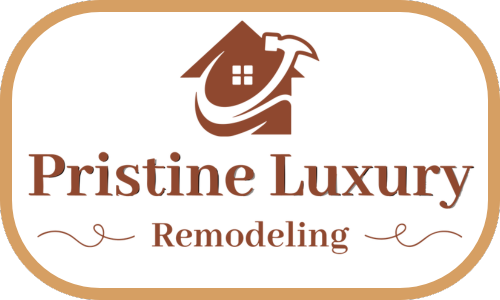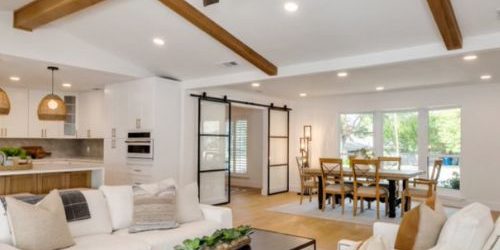Restoring and preserving the character of older homes during remodeling is a delicate balance of honoring the past while embracing modern conveniences. In Prosper, TX, where historic charm meets contemporary living, homeowners often seek to maintain the unique features that give their homes personality and history. This blog post explores effective strategies to restore and preserve the character of older homes during remodeling projects.
The key to restoring and preserving the character of older homes lies in careful planning, respecting original architectural details, and integrating modern amenities seamlessly.
Understanding the Home History
Researching the Home’s Background
Investigate the architectural style and historical significance of your home to gain a deeper understanding of its heritage. Start by gathering old photographs and documents that can provide insights into the original design and previous modifications. Consulting local historical societies or archives can also be invaluable, as they often hold records, maps, and other resources that can help piece together the history of your property. This research not only enriches your appreciation of the home’s past but also guides any renovation or restoration work, ensuring that any changes are in harmony with its historical character.
Identifying Key Features to Preserve
Pay special attention to preserving original woodwork and moldings, as they are often key features that reflect the craftsmanship and design of the period. Historic windows and doors also contribute significantly to the character of the home and may require careful restoration to maintain their integrity. Additionally, unique architectural elements like fireplaces and staircases are often focal points that embody the home’s history. These features should be treated with care, ensuring that any repairs or updates respect their original design and materials.
Assessing the Condition of Original Features
Begin by conducting a thorough inspection of the property to assess the condition of various elements. This will help you determine what can be restored to its original state and what may need to be replaced due to damage or wear. When making these decisions, it’s crucial to prioritize structural integrity and safety, ensuring that the home remains both stable and secure. Restoration efforts should strike a balance between preserving historical features and meeting modern safety standards.
Planning the Remodeling Project
Setting Clear Goals and Priorities
Define the aspects of the home’s character that are most important to preserve, such as original woodwork, historic windows, or unique architectural elements like fireplaces and staircases. Balancing these aesthetic goals with the functional needs of the modern household is essential to maintaining the home’s integrity while ensuring it meets current living standards. Creating a detailed project plan that outlines the scope of work, budget, and timeline will help guide the restoration process and ensure that both historical preservation and practical requirements are achieved.
Choosing the Right Materials
Source period-appropriate materials to maintain the historical authenticity of the home. Consider using reclaimed or salvaged items, such as original woodwork, moldings, or antique fixtures, to enhance the restoration’s authenticity. When introducing new materials, ensure they complement the old, blending seamlessly with the existing architectural elements. This careful selection of materials will help preserve the home’s character while accommodating necessary updates for modern living.
Hiring Experienced Professionals
Select contractors with experience in working on historic homes to ensure they understand the unique challenges and requirements of such projects. Collaborate with architects and designers who have a deep respect for the home’s character and can balance preservation with modernization. Seek recommendations from others who have undertaken similar restorations, and thoroughly check references to ensure the professionals you hire are well-qualified and reliable. This careful vetting process will help protect the integrity of the historic property throughout the renovation.
Restoring Architectural Details
Woodwork and Moldings
Repair or replicate original woodwork to maintain the authenticity and timeless appeal of the historic home. Employ traditional restoration techniques to preserve the craftsmanship, ensuring that the new work integrates flawlessly with the existing architectural details. This approach not only protects the home’s historical integrity but also enhances its overall aesthetic. By carefully restoring and highlighting these features, such as intricately carved moldings, ornate staircases, or vintage door frames, you can create focal points that celebrate the home’s rich history and add character to the space.
Windows and Doors
Restore original windows to maintain the home’s historical authenticity while considering necessary upgrades for improved energy efficiency. This might include adding discreet weatherstripping or using modern glass options that blend seamlessly with the original design, ensuring the preservation of style without sacrificing performance. Similarly, for historic doors, focus on preserving or replicating their original designs, whether through meticulous restoration or custom reproduction. By balancing these aspects, you maintain the home’s character and aesthetic while addressing practical needs, ensuring that the home remains functional and true to its heritage.
Fireplaces and Staircases
Clean and repair original fireplaces to preserve their historical charm and functionality, ensuring they remain safe and operational. Restore or replicate staircase details with attention to the original craftsmanship, including balusters, newels, and handrails, to maintain the home’s architectural integrity. Throughout these processes, prioritize safety and ensure compliance with current building codes to integrate modern standards with historic elements. This approach ensures that the home’s unique features are preserved while meeting contemporary safety and functionality requirements.
Integrating Modern Amenities
Updating Electrical and Plumbing Systems
Upgrade outdated systems, such as electrical, plumbing, and HVAC, to enhance safety and efficiency while integrating modern conveniences. Conceal new wiring and pipes to preserve the home’s aesthetic and maintain its historic charm. Where possible, use period-appropriate fixtures and fittings to blend seamlessly with the original design, ensuring that updates do not detract from the historical character of the home. This approach balances modern functionality with historical authenticity, preserving the home’s unique heritage while enhancing its usability and safety.
Modernizing Kitchens and Bathrooms
Blend modern appliances with vintage styles by selecting designs and finishes that harmonize with the home’s historic character. Choose materials that complement the existing architecture and add to the home’s overall aesthetic, ensuring a cohesive look. Incorporate contemporary conveniences discreetly, integrating them in a way that maintains the vintage charm while providing the functionality and efficiency of modern technology. This approach allows for the preservation of the home’s historical essence while enhancing its livability and comfort.
Enhancing Energy Efficiency
Insulate walls and attics without damaging original features by employing methods that preserve the integrity of the historic materials. For energy efficiency, install modern, energy-efficient windows and doors that fit within the architectural style, ensuring they enhance both performance and appearance. Integrate smart home technology subtly, choosing devices and systems that blend seamlessly with the home’s vintage aesthetics, so the modern upgrades complement rather than overpower the historical charm. This approach ensures that the home remains comfortable and energy-efficient while preserving its original character.
Answering Common Questions
Q1 How do I find the right professionals for my project?
A1 Look for contractors and designers with experience in historic homes.
Q2 What if original features are too damaged to restore?
A2 Consider replicating the features using modern materials and salvage parts of the original for use in other areas.
Q3 How can I make my historic home more energy-efficient?
A3 Insulate without compromising original walls and install energy-efficient windows that match the original style.
The Impact of Modern Technology
Modern technology can greatly enhance the functionality of older homes without detracting from their character. Smart home systems, energy-efficient appliances, and advanced building materials can be integrated seamlessly to provide comfort and convenience.
Seeking Expert Advice
Restoring and preserving the character of older homes is a complex task that benefits from professional expertise. Consulting with architects, designers, and contractors who specialize in historic homes can ensure that your remodeling project respects the past while embracing the future.
Conclusion
Restoring and preserving the character of older homes during remodeling is a rewarding endeavor that requires a thoughtful approach and a deep appreciation for historical details. By understanding the home’s history, planning meticulously, and integrating modern amenities with care, homeowners in Prosper, TX, can achieve a harmonious blend of old and new. Whether it’s preserving original woodwork, updating kitchens and bathrooms, or enhancing energy efficiency, each step contributes to maintaining the unique charm and character of these cherished homes. With the right professionals and a clear vision, you can transform your historic home into a timeless masterpiece that honors its past while embracing the future.
Visit us at Pristine Luxury Remodeling
For more information and personalized guidance visit us at Pristine Luxury Remodeling, We specialize in providing exceptional remodeling services that elevate your space into a masterpiece of luxury.







